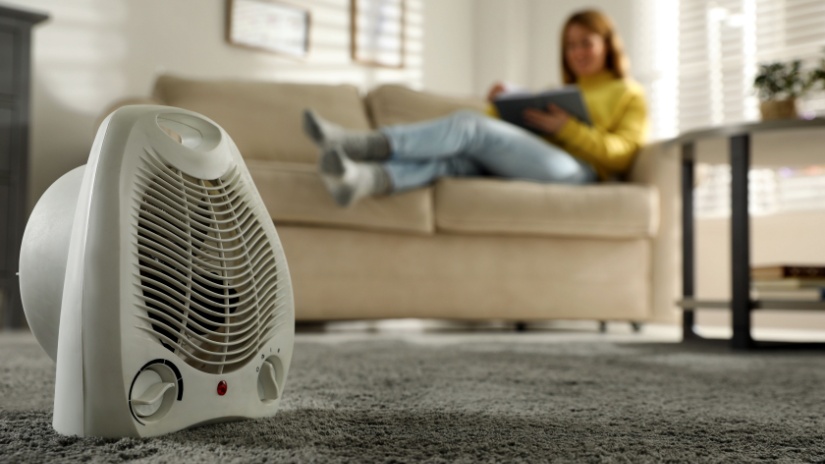Knowledge Centre
Saving money on your winter energy bills

When most people picture Australia, they think of golden beaches, scorching sun, and year-round barbecues. But for many Aussies - from the crisp highlands of Victoria to the chilly suburbs of Canberra - winter bites hard. As the mercury dips, our heaters hum, the hot showers stretch longer, and our energy bills quietly creep higher.
Luckily, there are plenty of clever, practical ways to stay warm and save money without compromising on comfort. Here’s how you can trim down your winter energy usage and give your wallet a well-deserved break.
Understand where the energy goes
Before diving into savings tips, it helps to know where your energy is being used. In winter, the biggest culprits tend to be:
- Heating systems
- Hot water
- Clothes dryers
- Lighting (those dark early nights add up)
Knowing this helps you focus your efforts where they’ll make the most impact.
Embrace smarter heating
Heat only the rooms you use
Don’t waste energy heating the entire house when you’re just watching telly in the lounge. Shut doors to unused rooms and use draught stoppers to keep the heat in.
Set your thermostat wisely
The optimal setting for winter comfort (and energy efficiency) is around 18–20°C. Every degree higher can increase your heating costs by up to 10%.
Insulate and seal
Stopping heat from escaping is one of the most effective ways to save. Consider fitting door seals, blocking chimneys (if unused), and closing heavy curtains at night to keep warmth inside.
Reverse ceiling fans
If you have ceiling fans, switch them to winter mode. This makes the blades spin clockwise, gently pushing warm air down where you need it.
Hot water doesn’t have to cost the earth
Hot water is a major energy user, especially in winter. A few quick fixes:
- Keep showers short - aim for 4 minutes.
- Lower your hot water system thermostat to 60°C for storage systems.
- Fix leaky taps - a dripping hot tap can waste thousands of litres a year.
- Install low-flow showerheads to use less hot water without sacrificing pressure.
Dry clothes cleverly
Tumble dryers are convenient but expensive to run. In winter, try:
- Using an indoor clothes airer near a sunny window or heat source (safely, of course).
- Spinning clothes on a higher setting in the washing machine to reduce drying time.
- Running the dryer only when necessary and cleaning the lint filter regularly to boost efficiency.
Light the way efficiently
With longer nights, you’re likely using lights more often. Make the switch to LED globes, which use around 75% less energy and last much longer than traditional bulbs.
Also, get into the habit of turning off lights when you leave a room. It sounds obvious, but it’s easy to forget!
Layer up and cosy down
Sometimes, the best way to beat the chill is the simplest: add a jumper! Invest in quality winter bedding, rugs for hard floors, and maybe even a trusty hot water bottle. Staying warm doesn't always have to come from your power point.
Why your energy plan matters more in winter
Even with all the best habits, if you’re on a dud energy plan, you’ll still be paying more than you should. Many Aussies don’t realise their energy plan may not be competitive anymore - especially if it's rolled over or was set up years ago.
Why switch?
- Rates change frequently - what was competitive last year might not be today.
- Discounts can expire - you may be paying more than new customers.
- Usage habits shift in winter, so it’s worth checking if your current plan aligns with seasonal needs.
- Reviewing your energy plan can be one of the quickest ways to save money - without changing a single habit.
Regional price increases
As if winter wasn't challenging enough, many Australian households are facing another hurdle: a significant increase in electricity prices starting 1 July 2025.
The Australian Energy Regulator (AER) has announced its final Default Market Offer (DMO) for the 2025–26 period, which will see price hikes across several states.
- New South Wales (NSW): Residents could see their annual bills rise by up to $228, with increases ranging from 8.3% to 9.7% depending on the region and retailer. For instance, customers with Essential Energy may experience a jump from $2,513 to $2,741 annually.
- Southeast Queensland (SEQ): Households in this region are facing more moderate increases, with rates climbing between 0.5% and 3.7%.
- South Australia (SA): Residents can expect hikes of 2.3% to 3.2%.
These adjustments are attributed to rising wholesale, network, and retail energy costs, compounded by the ongoing transition to renewable energy sources.
You can read more about this in our latest energy article.
Implications of the Market Price Cap (MPC) update
In addition to the DMO changes, the Australian Energy Market Commission (AEMC) is implementing adjustments to the Market Price Cap (MPC) and Cumulative Price Threshold (CPT). From 1 July 2025, the MPC will increase from $18,600/MWh to $20,300/MWh.
While these changes are designed to support the reliability of the National Electricity Market (NEM) during its transition, they may also lead to higher wholesale prices, which can trickle down to consumers.
Why switching your energy plan is more important than ever
With these impending price increases, it's crucial to review your current energy plan. Many households are not on the most competitive deals, and sticking with your current plan could mean paying more than necessary.
Comparison tools like Compare Energy can help you find better offers that may save you over $400 annually.
Call the experts who make it easy
Not sure where to start with switching plans? Don’t worry - help is just a phone call away.
Call our friendly, Aussie-based team at Compare Energy on 1300 790 106. We’ll help you find a better deal tailored to your needs and potentially save you hundreds this winter.

